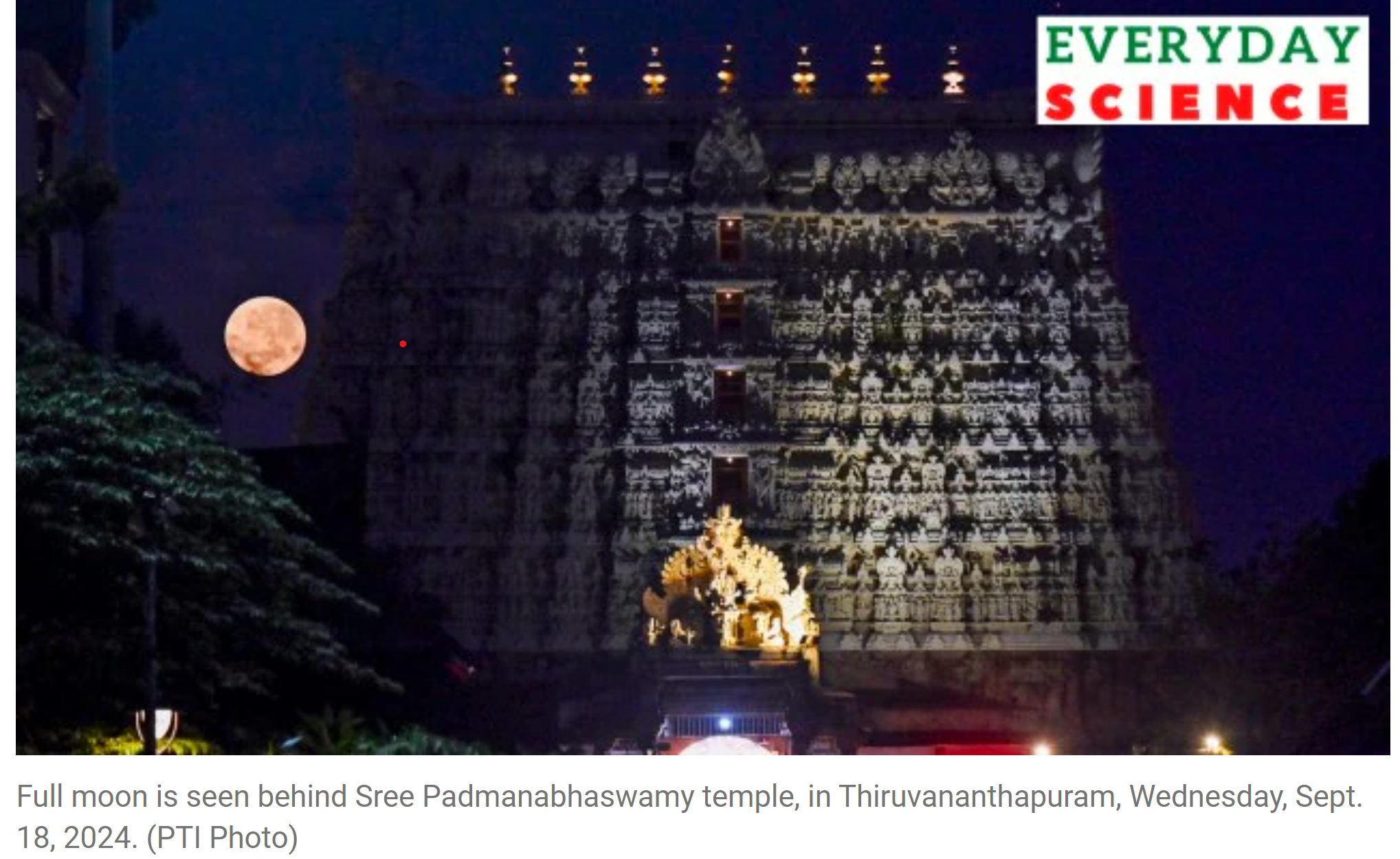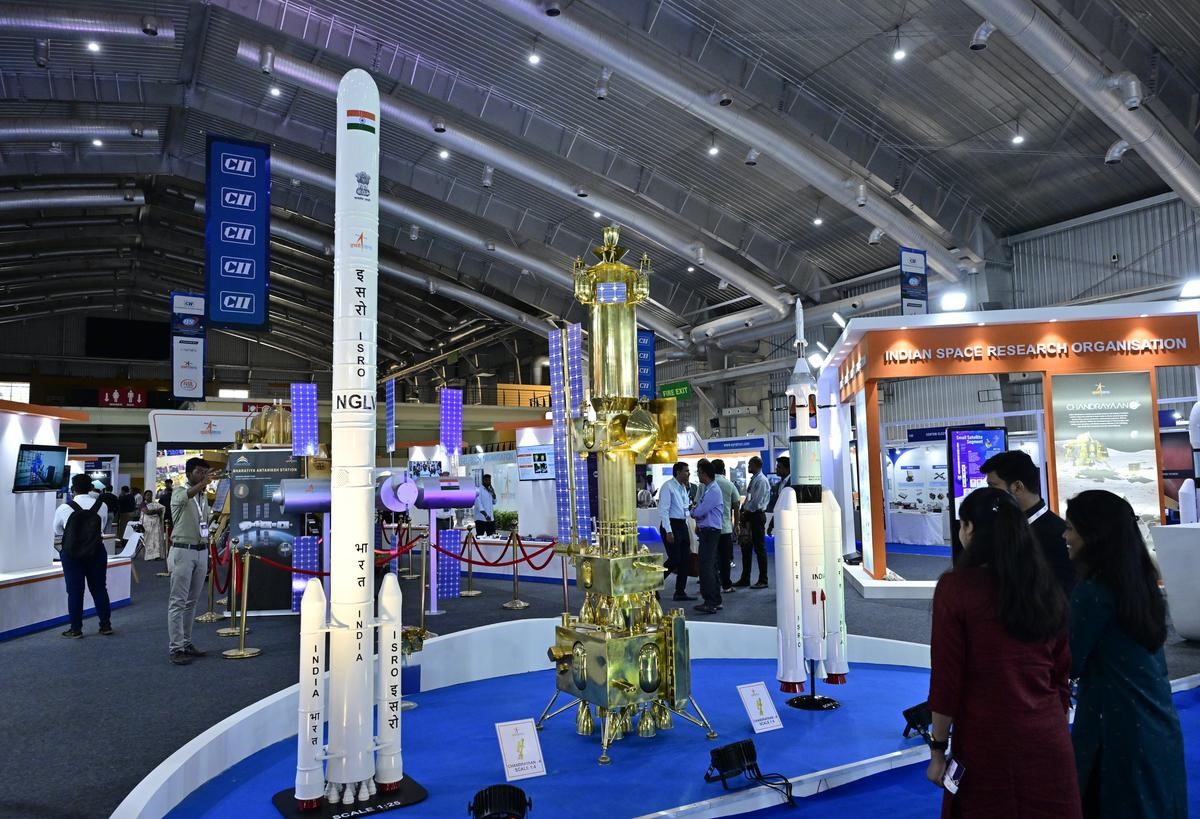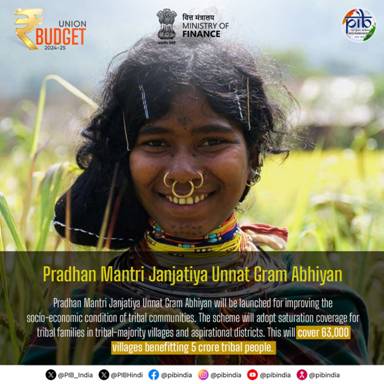EARTH TO EXPERIENCE A TEMPORARY 'MINI-MOON' IN SEPTEMBER

- 20 Sep 2024
In News:
In late September, Earth will temporarily capture a small asteroid known as 2024 PT5. This phenomenon, where an asteroid becomes a "mini-moon," will last for about two months before the asteroid escapes back into space. While Earth has gained mini-moons before, such occurrences are quite rare; most asteroids either miss the planet entirely or burn up upon entering the atmosphere.
What Is a 'Mini-Moon'?
Mini-moons are small asteroids that get temporarily captured by Earth's gravity, orbiting the planet for a limited time. These asteroids are typically small and difficult to detect—only four mini-moons have been identified in Earth's history, and none remain in orbit today. Some objects previously thought to be mini-moons were later determined to be space debris, including rocket stages and satellites.
Details About 2024 PT5
Discovered on August 7 through the NASA-funded Asteroid Terrestrial-impact Last Alert System (ATLAS), 2024 PT5 measures approximately 33 feet in length, making it invisible to the naked eye and standard amateur telescopes. However, it is detectable by professional astronomical equipment.
According to Carlos de la Fuente Marcos, a professor at the Complutense University of Madrid, 2024 PT5 originates from the Arjuna asteroid belt, which consists of space rocks that share similar orbits with Earth. There is also speculation that it could be a fragment resulting from an impact on the moon, as noted by Paul Chodas from NASA's Jet Propulsion Laboratory (JPL).
However, some experts argue that 2024 PT5 may not fully qualify as a mini-moon. For an asteroid to be classified as such, it must complete at least one full orbit around Earth. Instead, 2024 PT5 will follow a horseshoe-shaped path, leading Lance Benner, a principal investigator at JPL, to express skepticism about its classification as a mini-moon.
Significance of the Event
Studying 2024 PT5 will provide valuable insights into asteroids that pass near Earth and their potential for future collisions. Additionally, many asteroids are believed to contain precious minerals and water, which could be harvested for future space missions and resource utilization. Observing this mini-moon will enhance our understanding of these celestial bodies and their behavior in Earth's vicinity.
TRISHNA MISSION

- 20 Sep 2024
In News:
During a recent event, the President of the French Space Agency, Centre National d’Etudes Spatiales (CNES), addressed various topics, celebrating 60 years of collaboration between France and India in space exploration, alongside discussions on the Gaganyaan and TRISHNA missions.
Overview of the TRISHNA Mission
The Thermal Infrared Imaging Satellite for High-resolution Natural Resource Assessment (TRISHNA) is a joint initiative by the Indian Space Research Organisation (ISRO) and CNES.
Mission Objectives
TRISHNA aims to provide high-resolution, timely observations of Earth's surface temperature, monitor vegetation health, and analyze water cycle dynamics. It will facilitate:
- Assessment of urban heat islands
- Detection of thermal anomalies related to volcanic activity and geothermal resources
- Monitoring of snowmelt runoff and glacier behavior
- Collection of data on aerosol optical depth, atmospheric water vapor, and cloud cover
Satellite Payloads
TRISHNA is equipped with two main payloads:
- Thermal Infra-Red (TIR) Payload: Supplied by CNES, this payload includes a four-channel long-wave infrared imaging sensor that enables high-resolution mapping of surface temperature and emissivity.
- Visible-Near Infra-Red-ShortWave Infra-Red (VNIR-SWIR) Payload: Developed by ISRO, this payload consists of seven spectral bands aimed at detailed mapping of surface reflectance, which is crucial for calculating biophysical and radiation budget variables.
The data retrieved from both payloads will aid in solving surface energy balance equations to estimate heat fluxes.
Operational Details
- TRISHNA will operate in a sun-synchronous orbit at an altitude of 761 km, with a scheduled overpass time of 12:30 PM at the equator.
- This orbit will achieve a spatial resolution of 57 meters for land and coastal regions, and 1 km for oceanic and polar areas.
- The mission is expected to have an operational lifespan of five years.
PROJECT 200

- 20 Sep 2024
In News:
At the Bengaluru Space Expo 2024, Bengaluru-based start-up Bellatrix Aerospace launched Project 200, a pioneering satellite designed to operate in the Ultra-Low Earth Orbit (ULEO) range of 180 km to 250 km.
Revolutionary Capabilities
Bellatrix Aerospace claims that operating in this orbit dramatically enhances satellite capabilities and redefines their connection to Earth. The satellite's launch is part of a technology demonstration mission, showcasing an innovative propulsion system tailored for this low altitude.
Breakthrough Propulsion Technology
Traditionally, satellites are positioned above 450 km to minimize atmospheric interference. However, deploying at 200 km can significantly enhance capabilities, which has been hindered by propulsion technology limitations until now.
Enhanced Performance Metrics
The new propulsion system allows satellites to maintain their orbits for years, avoiding rapid deorbiting due to atmospheric drag. Key benefits of Project 200 include:
- Reduced Communication Latency: Halves the delay in satellite communication.
- Improved Image Resolution: Enhances clarity threefold.
- Cost Efficiency: Significantly lowers overall satellite costs.
Bellatrix's innovative approach not only addresses current limitations but also positions its satellite as a transformative solution for applications in high-resolution Earth observation, telecommunications, and scientific research.
PRADHAN MANTRI JANJATIYA UNNAT GRAM ABHIYAN

- 20 Sep 2024
In News:
The Union Cabinet, chaired by Prime Minister Narendra Modi, approved the Pradhan Mantri Janjatiya Unnat Gram Abhiyan. This mission aims to enhance the socio-economic conditions of tribal communities by saturating more than 63,000 tribal-majority villages and aspirational districts with a total budget of ?79,156 crore.
Budget Breakdown
- Total Outlay: ?79,156 crore
- Central Share: ?56,333 crore
- State Share: ?22,823 crore
Target Beneficiaries
The initiative is expected to benefit over 5 crore tribal people across 549 districts and 2,740 blocks in 30 States/UTs.
Context
- India's Scheduled Tribe (ST) population stands at 10.45 crore, according to the 2011 Census, with more than 705 tribal communities often residing in remote areas. This mission builds upon the successes of the Pradhan Mantri Janjati Adivasi Nyaya Maha Abhiyan (PM-JANMAN), launched on November 15, 2023.
Mission Objectives
- The mission aims to address critical gaps in social infrastructure, health, education, and livelihood through a comprehensive approach involving 25 interventions across 17 ministries.
Key Goals and Interventions
Goal 1: Developing Enabling Infrastructure
- Housing: Provision of pucca houses under the PMAY (Gramin) for eligible households, along with access to tapped water and electricity.
- Village Infrastructure: Improvement of all-weather road connectivity, mobile connectivity, and educational and health infrastructure.
Goal 2: Promotion of Economic Empowerment
- Skill Development: Enhanced training and self-employment opportunities for ST youth through initiatives like the Skill India Mission and support for tribal marketing.
Goal 3: Universal Access to Good Education
- Education Initiatives: Increase the gross enrollment ratio in schools and higher education, along with setting up tribal hostels for students.
Goal 4: Healthy Lives and Dignified Ageing
- Health Access: Provision of quality health facilities, aiming to meet national standards in maternal and child health indicators through mobile medical units.
Innovative Schemes
- Tribal Home Stay Initiative: Promotion of 1,000 homestays in tribal areas to boost tourism and provide alternate livelihoods. Each household can receive up to ?5 lakh for construction and ?3 lakh for renovations.
- Sustainable Livelihood for FRA Holders: Focus on 22 lakh FRA patta holders, enhancing their rights and providing livelihood support through various government schemes.
- Improving Educational Infrastructure: Upgrading tribal residential schools and hostels to improve local educational resources and retention rates.
- Sickle Cell Disease Management: Establishing Centers of Competence for affordable diagnostic services and prenatal care in regions where the disease is prevalent.
- Tribal Multipurpose Marketing Centres (TMMCs): Setting up 100 TMMCs to improve marketing of tribal products and facilitate better prices for producers.
WHITE REVOLUTION 2.0

- 20 Sep 2024
- Overview:
- India is the world's largest milk producer, with production reaching 230.58 million tonnes in 2022-23.
- White Revolution 2.0 focuses on cooperative societies, similar to the foundation laid by Operation Flood in the 1970s.
- Objectives of White Revolution 2.0:
- Increase daily milk procurement from 660 lakh kg (2023-24) to 1,007 lakh kg by 2028-29.
- Enhance the market access for dairy farmers, especially in uncovered areas.
- Generate employment and empower women through increased dairy cooperative involvement.
- Current Landscape:
- The Ministry of Cooperation has prioritized expanding the cooperative network since its formation in 2021.
- Dairy cooperatives operate in 70% of India’s districts with approximately 1.7 lakh dairy cooperative societies (DCSs).
- These DCSs serve around 2 lakh villages (30% of total villages) and account for 10% of milk production and 16% of marketable surplus.
- Regional Coverage:
- States like Gujarat, Kerala, and Sikkim have over 70% village coverage by dairy cooperatives.
- In contrast, states such as Uttar Pradesh, Uttarakhand, and Madhya Pradesh have only 10-20% coverage.
- Less than 10% coverage is observed in West Bengal, Assam, and several smaller northeastern states.
- Expansion Plans:
- NDDB plans to establish 56,000 new multipurpose dairy cooperative societies over the next five years and strengthen 46,000 existing DCSs.
- A pilot project initiated in February 2023 aims to set up dairy cooperatives in uncovered gram panchayats in Haryana, Madhya Pradesh, and Karnataka.
- Funding Sources:
- The National Programme for Dairy Development (NPDD) 2.0 will primarily fund White Revolution 2.0.
- Financial assistance will support village-level milk procurement, chilling facilities, and training initiatives.
- Current Production Insights:
- India’s milk production has grown significantly from 17 million tonnes in 1951-52 to 230.58 million tonnes.
- Average yield per animal is 8.55 kg/day for exotic/crossbred and 3.44 kg/day for indigenous animals.
- Per Capita Milk Availability:
- National average: 459 grams/day, higher than the global average of 323 grams/day.
- Significant regional variation: from 329 grams in Maharashtra to 1,283 grams in Punjab.
- Top Milk Producing States:
- Uttar Pradesh (15.72%), Rajasthan (14.44%), Madhya Pradesh (8.73%), Gujarat (7.49%), Andhra Pradesh (6.70%) contribute to 53.08% of total production.
- Indigenous buffaloes contribute 31.94%, while crossbred cattle contribute 29.81%.
- Market Dynamics:
- About 63% of total milk production is marketed; two-thirds of this is in the unorganised sector.
- Cooperatives hold a significant share in the organised sector, providing livelihoods to over 8.5 crore individuals, primarily women.
- Economic Impact:
- The dairy sector represents 40% (?11.16 lakh crore) of the agricultural value output in 2022-23, surpassing cereals.
